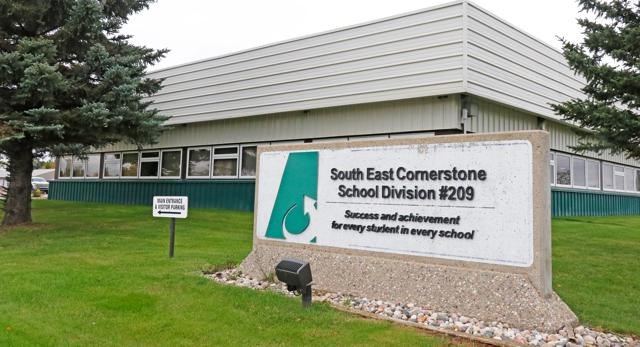WEYBURN - There is a lot to see and learn by diving into the South East Cornerstone Public School Division’s annual report.
The opportunity to grab some of the highlights of the recent report was provided on Nov. 20 by Education Director Keith Keating, who presented a summary of highlights from the documents during the school board’s monthly meeting.
Keating’s comprehensive glide through the highlights included such items as key success rates in the classrooms as well as within the administration. The report included incisive knowledge on credit attainment and graduation rates that exceeded provincial benchmarks for general student as well as First Nations and Métis populations.
Keating pointed out the modest, but still significant improvements in student attendance figures compared with the 2021-22 figures that followed the COVID-19 attendance restrictions.
The pace of student progress is followed closely and Keating pointed out, using the benefit of charts and graphs, how Grade 10 students, for example, are generally successful in getting eight credits or more as they transition into the higher levels, and again, this rate of achievement is about 10 per cent ahead of the provincial median.
Another key area to monitor, he explained, was to be found in the Grade 3 literacy testing grounds where increases in achievements have been noted and recorded in both the general and First Nations/Métis groupings. He noted the improvement level for the general population students in Grade 3 was in the four per cent range while the improvements in the First Nations group were close to 14.5 per cent.
Early years learning projects were credited with easing these numbers upward on a steady scale over the past few years, he noted.
Keating also addressed matters such as student connections and safety in SECPSD schools. Bringing in a culture and a sense of belonging and positive relationships helped improve those attendance figures he had spoken of earlier, said Keating.
Feeling safe in a school environment, especially in the elementary school years is important and it begins, once again, he suggested, by introducing those senses of comfort and connections in the early years, even before Kindergarten, and he cited several supports that are available before youngsters enter the classic traditional Kindergarten to Grade 12 stream.
Overall progress on school division targets and measures, has been noticed and there has been strategic activity launched to support the province’s recently released Education Plan and Priority Actions.
The overall goal across the province is to improve student outcomes and assess them correctly with student screening methods using universal data collection methods and intervention implementation when required.
The director also spoke of improvements in addressing mental health concerns and health communications around sensitive areas and the use of conflict resolution activity kits.
Connecting the teachers, learners and their families is also in the offing at the Kindergarten levels and that includes home visitations and welcoming events, mobile learning, student led conferences at higher grade levels and an annual Youth Wellness Day.
All these actions and activities as well as traditional classroom action is monitored by superintendents and co-ordinators with the assistance of the in-school administrators.
Inspiring successes in the First Nations and Métis communities also includes such things as elder connections, education liaisons and embracing local traditional protocols, Keating said.
Understanding the collaborative response model is a key element in response to the needs of learners, he added. There are professional development services to help educators work on positive response models and that could include the inclusion of community partnerships in various occupations.
Keating concluded his 40-minute dissertation by noting with a smile, “there’s a lot of information in there,” while pointing to the annual report charts displayed on the video screen in front of the trustees.






